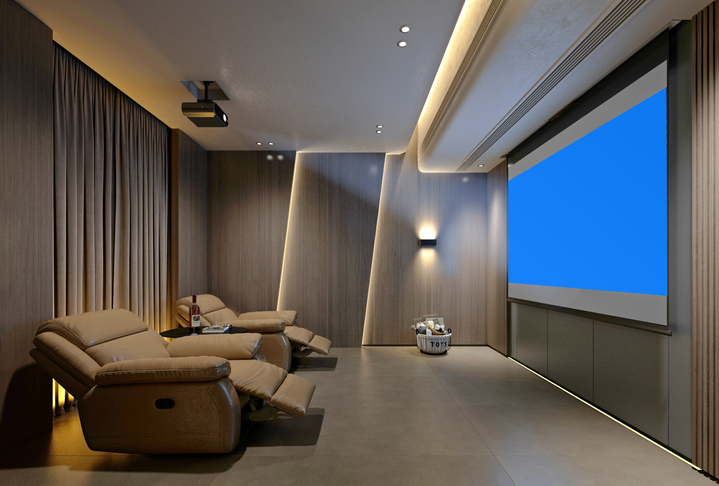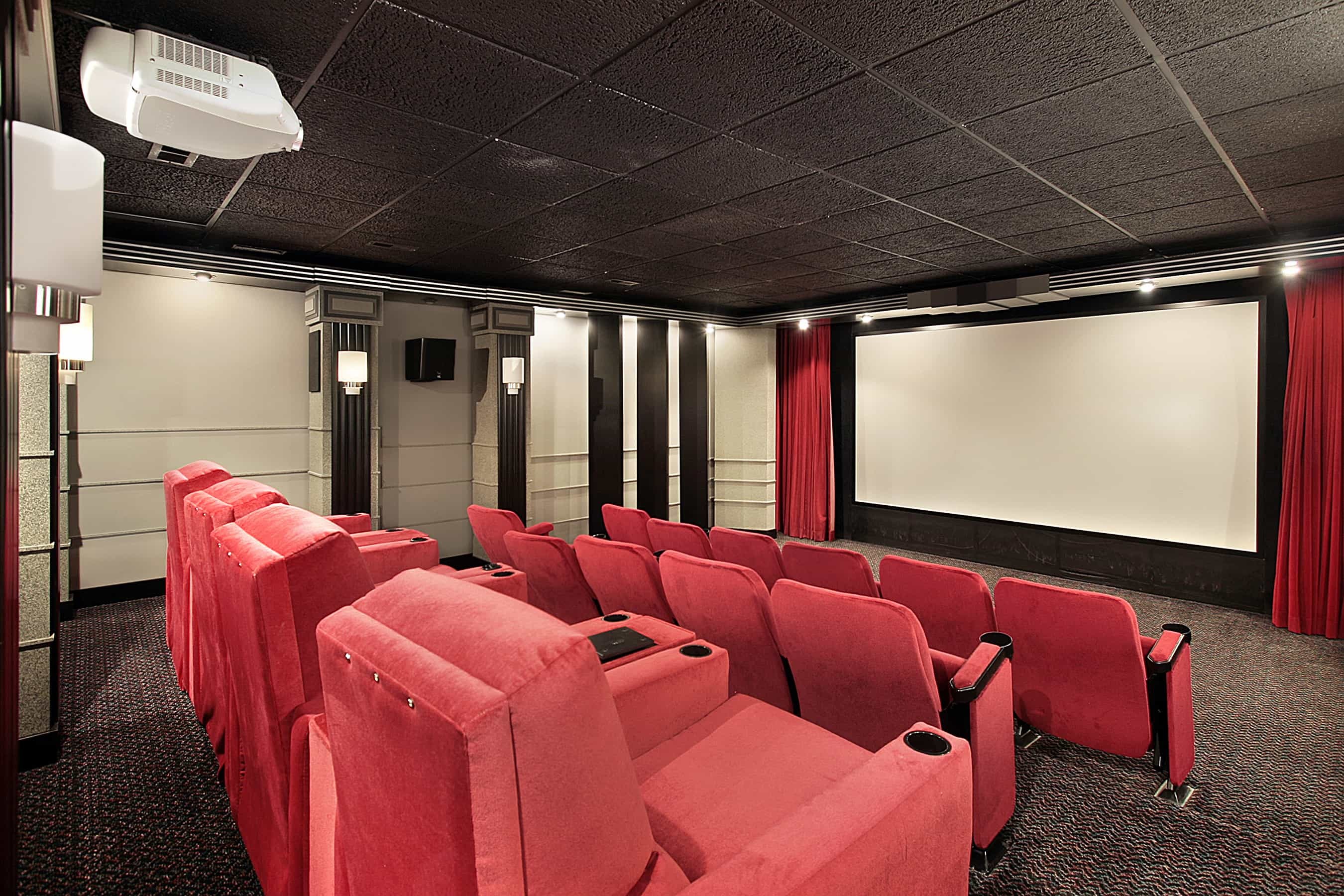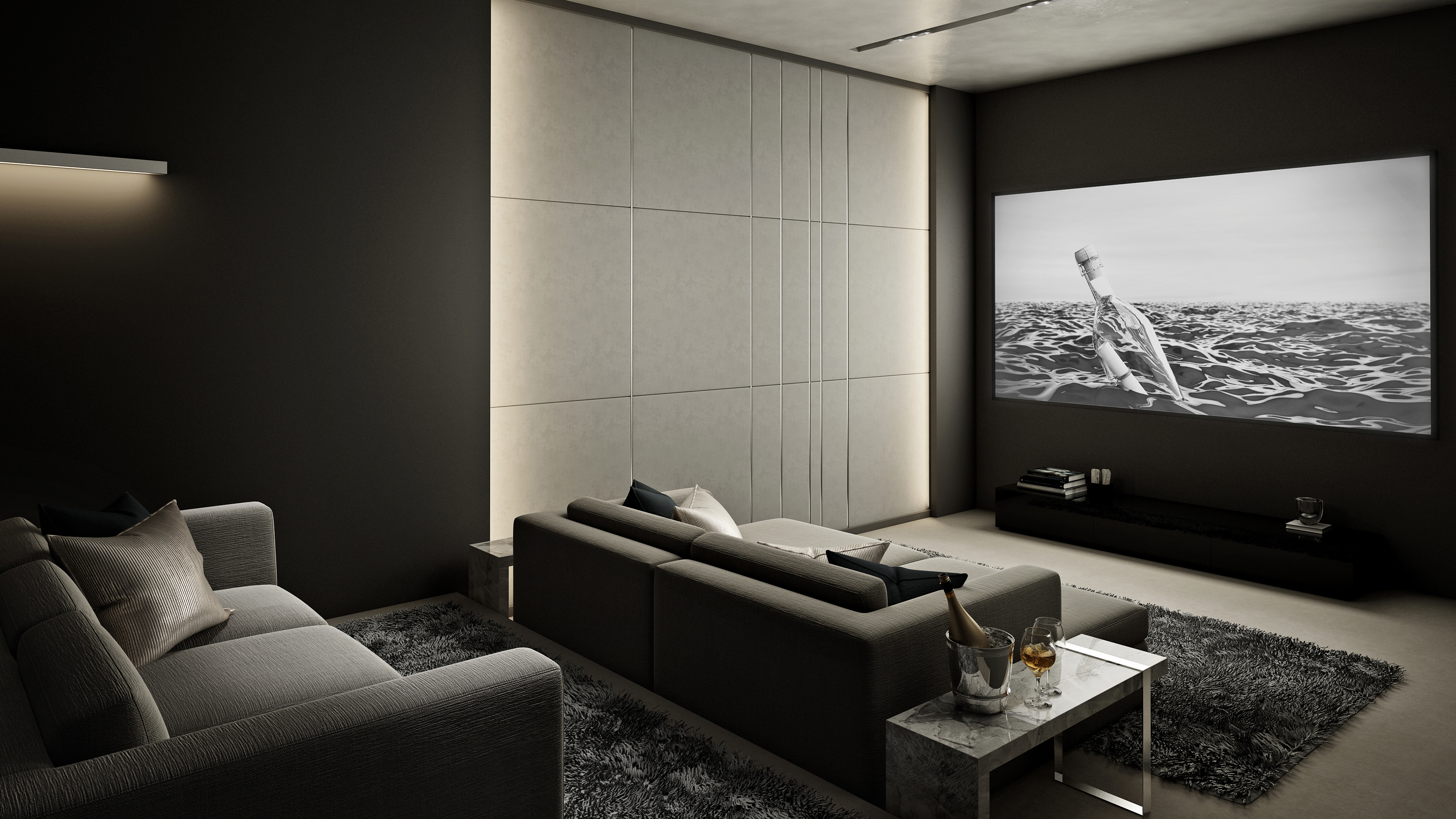Home Theater 101: Every Little Thing You Need to Know for a Cinematic Experience at Home
Developing a home theater that equals the cinematic experience of an industrial theater entails mindful consideration of several parts, consisting of display option, stereo, and space layout. Each component plays an essential duty in attaining the desired atmosphere and performance. Whether you are contemplating the suitable screen dimension or the complexities of border noise, recognizing these basics is essential. As we check out these important parts, it comes to be obvious that the choices made can substantially impact your general watching experience, leaving one to ponder exactly how these decisions will form your individual cinema.
Choosing the Right Screen
When establishing a home theater, choosing the right screen can make or break the viewing experience - home theater design tampa. The display acts as the focal point of your configuration, affecting picture top quality, checking out angles, and general visual. Trick factors to consider consist of screen kind, resolution, and size
First, identify the appropriate screen size based on your area measurements and seating distance. A general guideline is to rest around 1.5 to 2.5 times the angled screen size for ideal viewing. Next, pick between numerous screen kinds, such as fixed-frame, motorized, or retracting displays, each offering unique benefits. Fixed-frame displays normally offer the finest photo high quality, while mechanized options enable for versatility precede usage.
Resolution is an additional critical aspect. For an absolutely immersive experience, consider a screen designed for 4K or even 8K material, ensuring intensity and clearness. Additionally, consider the screen's gain, which affects illumination and comparison; a higher gain can enhance illumination in well-lit areas, while a reduced gain may be preferable for darker environments.
Choosing Sound Equipment
Audio devices is an important component of any type of home cinema system, significantly enhancing the overall watching experience. The option of audio gear can determine the depth, quality, and immersion of sound, critical for creating a motion picture ambience.
When selecting audio tools, consider a border stereo, which usually consists of a receiver, several audio speakers, and a subwoofer. A 5.1 or 7.1 network system is suggested, where the very first number stands for the speakers and the 2nd the subwoofer, giving an immersive soundscape. The receiver is the heart of the system, handling audio and video clip signals, and ought to sustain modern formats like Dolby Atmos for an improved spatial experience.
Quality audio speakers are vital; try to find designs that use a well balanced sound account with good bass feedback. Floor-standing speakers can generate richer noise, while shelf options conserve room. In addition, think about cordless options for ease of installation, although wired systems usually supply premium efficiency.
Ideal Seating Arrangements
Creating a perfect home theater experience pivots considerably on ideal seating plans. The setup of seats plays a vital function in both comfort and seeing high quality, straight impacting the overall cinematic experience.
First, consider the screen size and viewing range. A common guideline is to place seats at a range about 1.5 to 2.5 times the diagonal dimension of the display. This guarantees an immersive experience without straining the eyes.
Following, altitude is crucial. The look at this now back rows need to be greater than the front to avoid blockages if your seats is in a tiered style. For level seats, guarantee that the front row is not as well near to the screen, which everyone has a clear view.
Furthermore, consider the arrangement in terms of social dynamics. Team seats can boost the public experience, while private seats find out here may be liked for personal viewing.

Finally, focus on comfort with ergonomic seats that sustains extensive viewing durations. Incorporating reclining chairs or cushioned seats can significantly enhance the experience, making the home movie theater a preferred destination for both enjoyment and relaxation.
Lighting and Ambiance
Effective lighting and atmosphere are important elements of a well-designed home cinema, as they substantially influence the watching experience. The best lighting can boost the motion picture feel, while bad choices can detract from it. For optimal outcomes, think about a layered lights method that includes ambient, task, and accent lights.
Ambient illumination supplies general illumination, ensuring that the area is not entirely dark, which can stress the eyes. Dimmer buttons are highly recommended, permitting modifications based upon the web content being seen. Job lighting, such as wall sconces or floor lamps, supplies functional lighting for tasks like analysis or navigating the space without interrupting the general ambience.
Accent lighting can be utilized to highlight building features or create centerpieces, including deepness and interest to the space. LED strip lights behind screens or along racks can supply a subtle radiance that boosts the visual experience without overwhelming the audience.

Wiring and Installation Tips
A well-planned electrical wiring configuration is important for achieving optimum performance in your house movie theater system. Proper electrical wiring not only makes certain premium sound and video clip signals however likewise improves the general aesthetic of your area. Begin by mapping out your layout, determining where each component will certainly be put, including your display, speakers, and receiver.
When choosing cables, focus on top notch, properly gauged wiring to reduce signal loss. HDMI cables ought to be made use of for video links, while audio speaker wire must match the specifications of your speakers and amplifier. Choose in-wall rated cable televisions to follow security criteria and preserve a clean look.

Conclusion
In summary, creating a remarkable helpful site home movie theater experience requires mindful factor to consider of various elements, including screen selection, audio equipment, seating plans, illumination, and electrical wiring. By focusing on these factors, a cinematic atmosphere can be successfully duplicated, allowing for immersive watching experiences that rival traditional movie theater settings.
Creating a home theater that measures up to the cinematic experience of a commercial theatre entails careful factor to consider of multiple parts, including display option, audio systems, and room design.When setting up a home cinema, choosing the best display can make or damage the seeing experience. Next off, pick between different screen kinds, such as fixed-frame, mechanized, or retractable displays, each offering distinct benefits. For a genuinely immersive experience, take into consideration a display made for 4K or even 8K content, ensuring intensity and quality.In recap, creating an extraordinary home movie theater experience requires careful factor to consider of different components, including display selection, audio tools, seating plans, lights, and wiring.